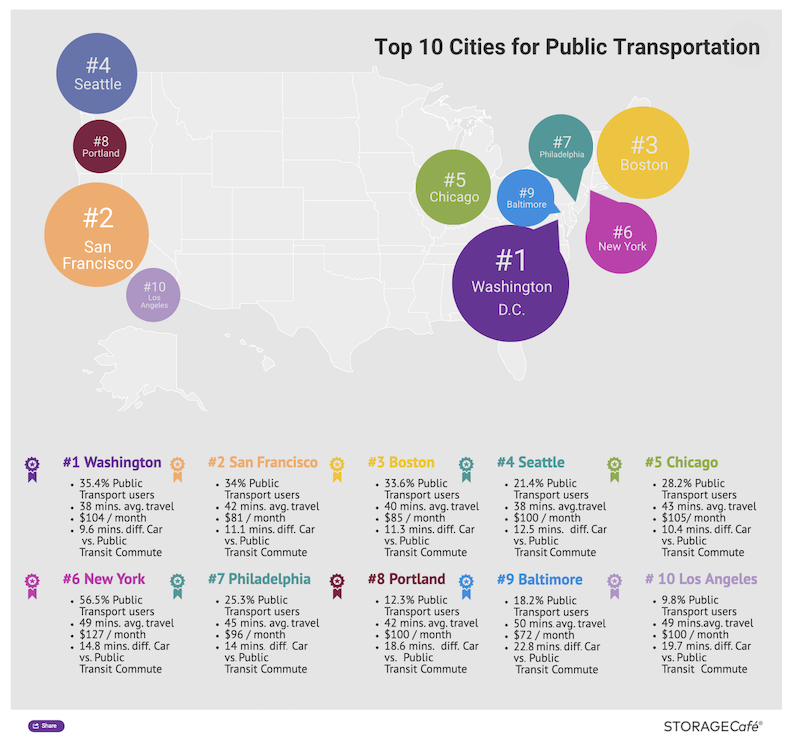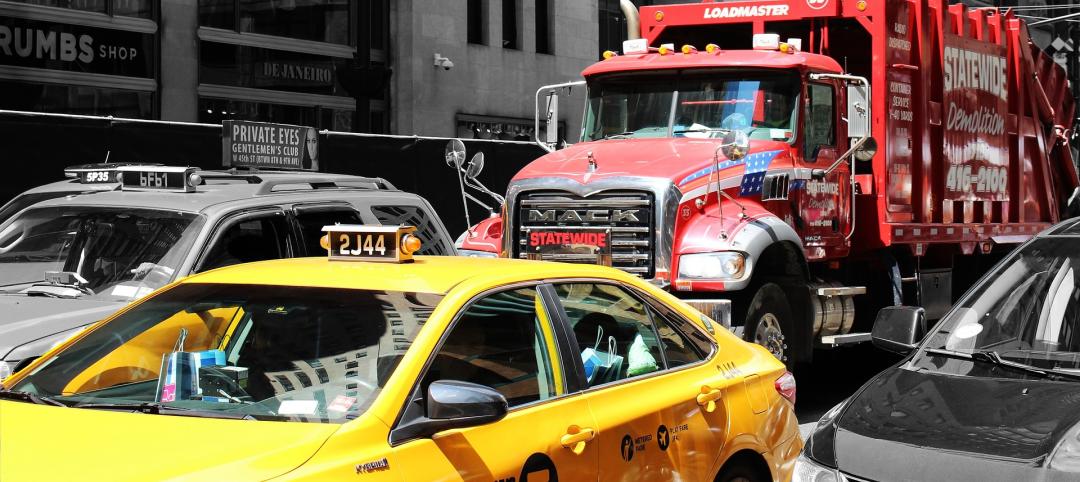Last summer, the New York Times ran a story with the headline “The Capital of Car Culture, Los Angeles Warms to Mass Transit.” That article focused on the recent opening of extensions of L.A.’s Expo and Gold transit lines, and a tax-funded initiative that would finance 40 major transit projects over the next 40 years, including 100 miles of new rail lines and a train tunnel through the Sepulveda Pass to connect the L.A. Basin with the San Fernando Valley.
Cities around the country, from Denver to Tyler, Texas, have embraced transit investment as an economic stimulus. The Federal Transit Administration (FTA) estimates that every dollar spent on transit translates to $4 in economic returns. Property located near transit is up to 150% more valuable. And every $1 billion invested in transit supports at least 20,000 jobs.
Amtrak recorded a record $3.4 billion in revenue in fiscal 2018 from 31.7 million passenger trips, and its lowest operating loss ($168 million) since 1973. And transit-oriented development is now an abiding model for such new construction projects as office buildings, stadiums, and entertainment districts.
So it’s not surprising that public transit ridership across the U.S. was up by 11% between 2010 and 2017, compared to a 6% increase in car ridership during that period, according to a new report on urban public transportation trends that the website STORAGECafé released late last month. STORAGECafé is part of Yardi, the property management software provider.
“Better public transit can make and shape a neighborhood and improve the character of a city,” the report states. “It can provide for the whole range of workers that are needed from refuse collectors to college professors, not to mention addressing environmental concerns. The U.S.’s largest and most rider-friendly cities are showing how this can be done.”
However, more recent FTA data paints a less sanguine portrait of public transit ridership per capita, which with the exception of three metros—Seattle, Las Vegas, and Salt Lake City—declined between 2010 and 2018 (see chart below), despite major investments in such cities as Los Angeles, Houston, and Atlanta. Last month, the Los Angeles Times reported on San Diego’s proposal to use billions in taxpayer money to fund a high-speed rail system.

Last year, despite major investments by some big cities, public transit ridership declined in most cities, according to Federal Transit Administration estimates. Chart: Los Angeles Times/San Diego Union-Tribune
Objectively, Americans still prefer the comfort and convenience of their personal cars and trucks: 127 million drove to work in 2017. But STORAGECafé still sees public transit as an emerging transportation mode, with 7.5 million people commuting by bus or train in 2017. In New York City, which operates the country’s largest mass-transit system, its public transit ridership increased by nearly 239,000 in 2017.
Among the 30 largest cities in the U.S., San Jose saw a 46.7% increase in public transit ridership in 2017, vis a vis 2010, followed by Jacksonville, Fla. (35.8%, Nashville (26%), Columbus, Ohio (17.3%), and Dallas (14.1%).
Washington D.C. ranks as STORAGECafé’s No. 1 city for public transportation, based on a combination of factors: share of people who use it, time it takes to get to work, travel time compared to car travel, and cost as a portion of median income. In D.C., 35.4% of its residents use public transit. It takes them, on average, 38 minutes to get to work (9.6 minutes quicker than had they drove), and costs $104 per month, or 2.2% of the market’s median earnings.

STORAGECafé ranks Washington DC as the No. 1 public transit city in the country, based on such factors as users per population, travel time, and commuter costs. Image: STORAGECafé
Washington’s public transit ranking is followed by San Francisco, Boston (which on Nov. 4 decided to convert its commuter rail network into a regional rail network), Seattle, Chicago, New York, Philadelphia, Portland, Ore., Baltimore, and Los Angeles.
STORAGECafé acknowledges the challenges associated with providing public transit service in large cities that, in many cases, are experiencing population growth. It notes that improving public transit “requires planning and legislation, which can take time.” But many of America’s metros, already clogged by vehicular congestion, have little choice but to move toward public transit as a means of moving people to and from where they live, and to present their cities as attractive options for businesses.
The benefits of public transit are manifold, says the report, especially in light of the 4.5 million serious injuries and 40,000 fatalities caused by car crashes last year, according to the National Safety Council. STORAGECafe’s report contends that public transit is 10 times safer than driving a car, and uses less fuel per passenger, which means cleaner air for cities. (The U.S. Department of Transportation states that public transit produces 95% less carbon monoxide than private vehicles.)
The report also suggests that public transit is less stressful than individual driving. It cites a study of Millennial mobility by the American Public Transportation Association and the Transit Cooperative Research Program, which found that public transit is conducive to Millennials’ preferences for working and socializing online while they travel.
The notion that public transit is the preferred mode for mostly lower-income commuters is starting to change, too. STORAGECafé found that 23.3% of public transit users earn more than $75,000 annually, compared to 17.6% in that earnings bracket in 2010.
Related Stories
Urban Planning | Oct 30, 2024
Bridging the gap: How early architect involvement can revolutionize a city’s capital improvement plans
Capital Improvement Plans (CIPs) typically span three to five years and outline future city projects and their costs. While they set the stage, the design and construction of these projects often extend beyond the CIP window, leading to a disconnect between the initial budget and evolving project scope. This can result in financial shortfalls, forcing cities to cut back on critical project features.
Designers | Sep 20, 2024
The growing moral responsibility of designing for shade
Elliot Glassman, AIA, NCARB, LEED AP BD+C, CPHD, Building Performance Leader, CannonDesign, makes the argument for architects to consider better shade solutions through these four strategies.
Multifamily Housing | Aug 21, 2024
Nation's leading multifamily developer expands into infrastructure
Greystar's strategy for infrastructure is driven by the shifting landscape of today's cities—primarily in the increased digitization, urbanization, and transitions to clean energy.
Urban Planning | Aug 15, 2024
New York City begins first large-scale porous pavement installation
New York City is installing its first large-scale porous pavement installation along seven miles of roadway in Brooklyn. The project will keep 35 million gallons of stormwater out of the combined sewer system each year, according to a news release.
Urban Planning | Aug 15, 2024
The magic of L.A.’s Melrose Mile
Great streets are generally not initially curated or willed into being. Rather, they emerge organically from unintentional synergies of commercial, business, cultural and economic drivers. L.A.’s Melrose Avenue is a prime example.
MFPRO+ News | Jul 22, 2024
6 multifamily WAFX 2024 Prize winners
Over 30 projects tackling global challenges such as climate change, public health, and social inequality have been named winners of the World Architecture Festival’s WAFX Awards.
Urban Planning | Jun 10, 2024
N.Y. governor halts Manhattan traffic congestion pricing plan
New York Gov. Kathy Hochul says she is indefinitely delaying the implementation of congestion pricing in Manhattan just weeks before the plan was to take effect. The controversial plan would have had drivers pay $15 to enter Manhattan south of 60th street.
Urban Planning | May 28, 2024
‘Flowing’ design emphasizes interaction at Bellevue, Wash., development
The three-tower 1,030,000-sf office and retail development designed by Graphite Design Group in collaboration with Compton Design Office for Vulcan Real Estate is attracting some of the world’s largest names in tech and hospitality.
Mixed-Use | May 22, 2024
Multifamily properties above ground-floor grocers continue to see positive rental premiums
Optimizing land usage is becoming an even bigger priority for developers. In some city centers, many large grocery stores sprawl across valuable land.
Sustainable Development | May 10, 2024
Nature as the city: Why it’s time for a new framework to guide development
NBBJ leaders Jonathan Ward and Margaret Montgomery explore five inspirational ideas they are actively integrating into projects to ensure more healthy, natural cities.

















